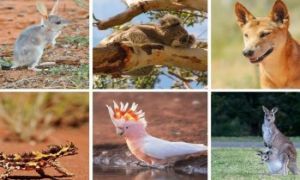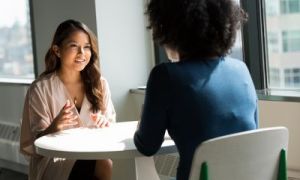Reflecting on pedagogy is where practice becomes purpose. It’s the moment we pause, zoom out, and ask not just what we’re doing—but why, how, and who it serves. In early childhood education, this reflection is a deeply relational, emotionally intelligent act that transforms routines into revelations.
What Does It Mean to Reflect on Pedagogy?
Reflection on pedagogy involves:
- Examining your teaching choices: Why did I respond that way? What theory or value guided me?
- Listening to children’s cues: What are they telling me—verbally, emotionally, and behaviorally?
- Interrogating assumptions: Whose voice is centered? Who is missing?
- Adapting practice: How can I better support emotional safety, agency, and inclusion?
It’s not just about improvement; it’s about alignment with your values, your children’s needs, and your community’s context.
Reflective Questions to Guide Practice
| Focus Area | Reflective Prompts |
|---|---|
| Child Voice | What did the child express today—verbally or nonverbally? How did I respond? |
| Emotional Safety | Did my environment and tone support regulation and trust? |
| Pedagogical Intent | Was my teaching intentional or reactive? What theory underpinned my choices? |
| Cultural Inclusion | Whose stories, languages, and identities were visible today? |
| Documentation | Does my documentation reflect lived experience or just outcomes? |
Reflective Practice in Action
Ron Grady describes reflection as being “rooted in wonder”—a disposition of curiosity that leads educators down a rabbit hole of why and what if questions. For example:
- Why are children drawn to rough-and-tumble play?
- What if I reframed this play as emotional exploration rather than disruption?
This kind of reflection deepens not just our understanding of children but of ourselves.
Example
Here's a completed example of reflecting on early childhood pedagogy with sample paragraphs for each section, tailored to emotionally intelligent, trauma-informed, and child-led practice.
1. Pedagogical Intent
What is the purpose of this learning experience?
Sample Paragraph:
This experience was designed to foster emotional regulation and peer connection through sensory-rich play. By offering water beads, calming music, and soft lighting, we aimed to create a space where children could explore textures, express feelings, and co-regulate with peers. The intent was to support wellbeing and identity development, particularly for children navigating transitions or heightened emotional states.
2. Theoretical Alignment
Which pedagogical approach informs this practice?
Sample Paragraph:
This practice draws on socio-cultural and trauma-informed pedagogies, particularly Vygotsky’s emphasis on co-construction and the Reggio Emilia view of the environment as a third teacher. By embedding child voice into the setup and allowing children to rearrange materials, we honored their agency and cultural knowledge. The approach also reflects emotional safety principles, ensuring predictable routines and responsive adult presence.
3. Learning Environment Design
How is the space prepared to support this pedagogy?
Sample Paragraph:
The environment was intentionally designed to be emotionally safe and sensory-friendly. Soft cushions, natural light, and calming scents created a soothing atmosphere. Materials were accessible at child height, with visual cues and photo prompts to support autonomy. A quiet corner with emotion cards and weighted toys was available for self-regulation. The space reflected children’s interests, including a collaborative mural they initiated last week.
4. Child Voice & Participation
How are children involved in planning, decision-making, and reflection?
Sample Paragraph:
Children co-designed the play invitation by selecting materials and naming the experience “Squishy World.” Their ideas were documented using caption kits, with quotes like “It feels like jelly rain!” displayed alongside photos. During reflection, children shared stories about their creations, which were transcribed and added to the group journal. Families contributed cultural stories about water, enriching the experience with diverse perspectives.
5. Educator Strategies
What intentional teaching moves are used?
Sample Paragraph:
Educators used open-ended questions (“What might happen if we mix these?”), emotion coaching (“I see you’re frustrated—can I help?”), and modeling of respectful dialogue. Observations were recorded using trauma-informed documentation tools, noting emotional cues and peer interactions. Educators adapted their responses based on children’s regulation needs, offering sensory breaks or co-regulation support as needed.
6. Outcomes & Impact
Which EYLF outcomes are supported?
Sample Paragraph:
This experience supported Outcome 1 (Identity) by affirming children’s emotional expressions and cultural stories and Outcome 3 (Wellbeing) through co-regulation and sensory play. Outcome 5 (Communication) was evident in children’s storytelling and captioned documentation. Children demonstrated increased emotional vocabulary, peer empathy, and sustained engagement—key indicators of developmental progress.
7. Next Steps & Adaptations
How will this pedagogy evolve?
Sample Paragraph:
Next week, we’ll extend the experience by introducing natural elements like leaves and stones, based on children’s interest in “forest jelly.” We’ll invite families to share calming rituals from home and adapt the environment to include a visual schedule for predictability. Educators will reflect on emotional safety indicators and adjust strategies to support children with emerging regulation needs.
Reflecting on pedagogy isn’t a checklist—it’s a commitment to growth, connection, and care. It’s the quiet courage to ask, “Is this serving children well?” and the creative spark to imagine what could be. Whether through daily journaling, collaborative dialogue, or revisiting the EYLF with fresh eyes, each moment of reflection deepens our practice and restores our purpose.




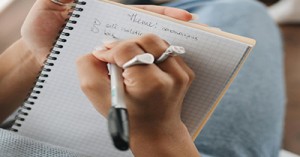
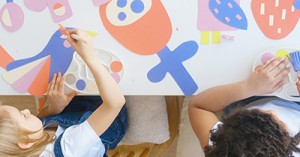
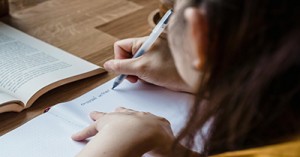
 Here is the list of the EYLF Learning Outcomes that you can use as a guide or reference for your documentation and planning. The EYLF
Here is the list of the EYLF Learning Outcomes that you can use as a guide or reference for your documentation and planning. The EYLF The EYLF is a guide which consists of Principles, Practices and 5 main Learning Outcomes along with each of their sub outcomes, based on identity,
The EYLF is a guide which consists of Principles, Practices and 5 main Learning Outcomes along with each of their sub outcomes, based on identity, This is a guide on How to Write a Learning Story. It provides information on What Is A Learning Story, Writing A Learning Story, Sample
This is a guide on How to Write a Learning Story. It provides information on What Is A Learning Story, Writing A Learning Story, Sample One of the most important types of documentation methods that educators needs to be familiar with are “observations”. Observations are crucial for all early childhood
One of the most important types of documentation methods that educators needs to be familiar with are “observations”. Observations are crucial for all early childhood To support children achieve learning outcomes from the EYLF Framework, the following list gives educators examples of how to promote children's learning in each individual
To support children achieve learning outcomes from the EYLF Framework, the following list gives educators examples of how to promote children's learning in each individual Reflective practice is learning from everyday situations and issues and concerns that arise which form part of our daily routine while working in an early
Reflective practice is learning from everyday situations and issues and concerns that arise which form part of our daily routine while working in an early Within Australia, Programming and Planning is reflected and supported by the Early Years Learning Framework. Educators within early childhood settings, use the EYLF to guide
Within Australia, Programming and Planning is reflected and supported by the Early Years Learning Framework. Educators within early childhood settings, use the EYLF to guide When observing children, it's important that we use a range of different observation methods from running records, learning stories to photographs and work samples. Using
When observing children, it's important that we use a range of different observation methods from running records, learning stories to photographs and work samples. Using This is a guide for educators on what to observe under each sub learning outcome from the EYLF Framework, when a child is engaged in
This is a guide for educators on what to observe under each sub learning outcome from the EYLF Framework, when a child is engaged in The Early Years Learning Framework describes the curriculum as “all the interactions, experiences, activities, routines and events, planned and unplanned, that occur in an environment
The Early Years Learning Framework describes the curriculum as “all the interactions, experiences, activities, routines and events, planned and unplanned, that occur in an environment